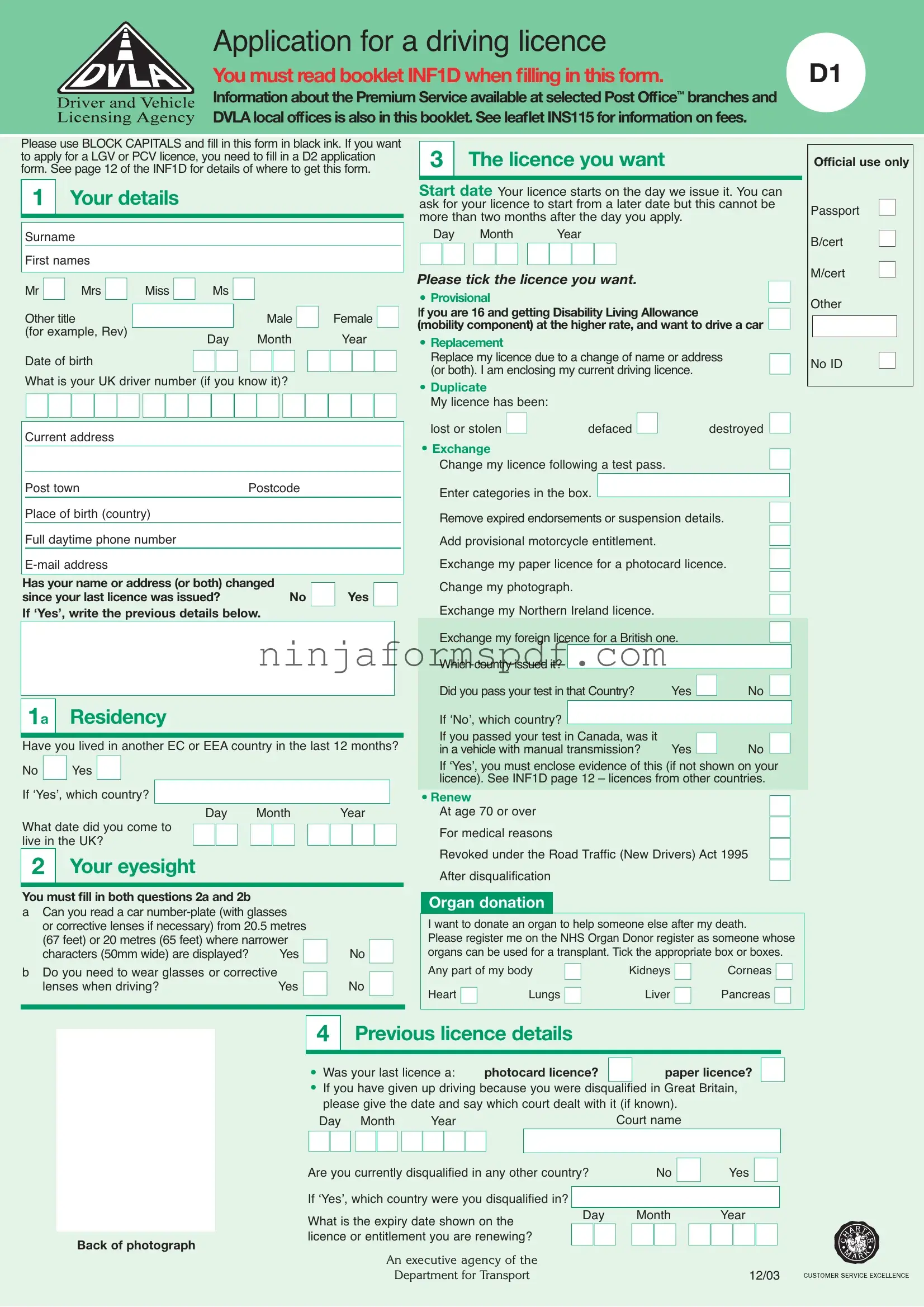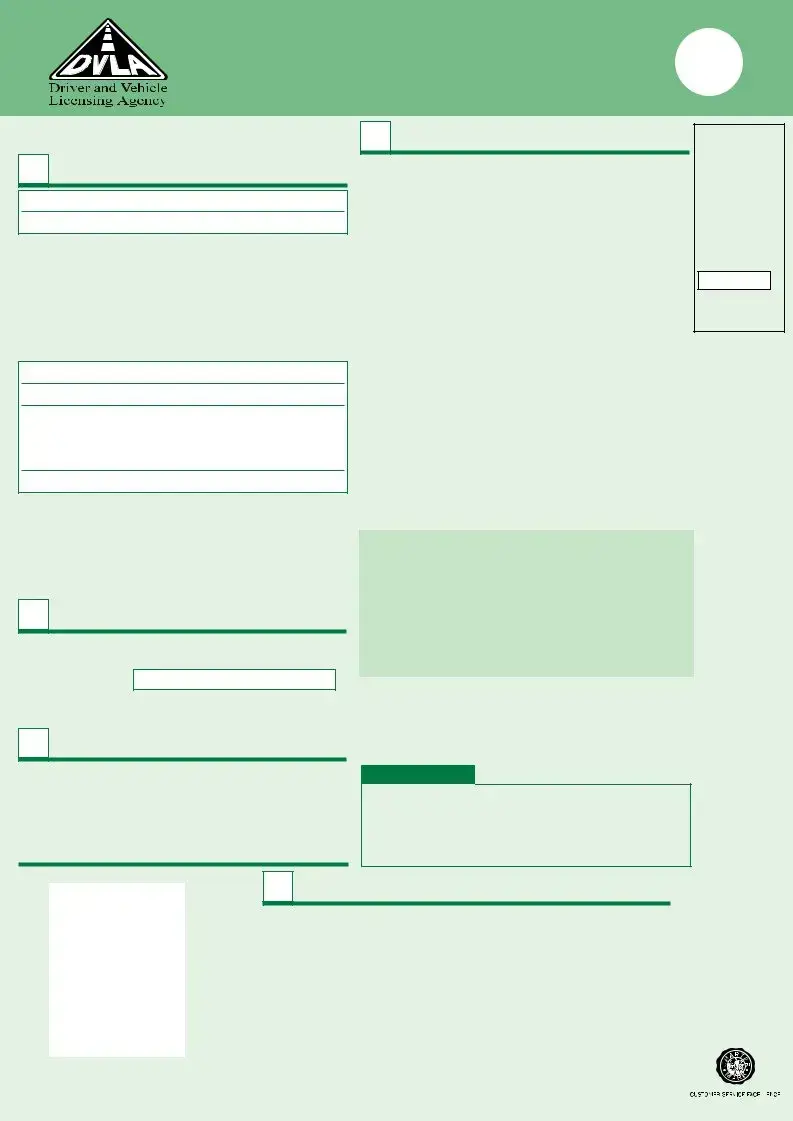What is a D1 form and when do I need it?
The D1 form is an application for a UK driving license. You'll need it if you're applying for a first provisional license, replacing a lost, stolen, or damaged license, changing your name or address on your current license, or renewing your license. Specific situations also require the D1 form, such as applying for a provisional motorcycle entitlement or exchanging a paper license for a photocard license.
Where can I get a D1 DVLA form?
You can obtain a D1 form at most Post Office branches across the UK. It's also available directly from the DVLA (Driver and Vehicle Licensing Agency) online, where you can order it to be delivered to your address. Additionally, certain information and supplementary forms are accessible through the DVLA website for direct download.
Is there a guide on how to fill out the D1 form?
Yes, when filling out the D1 form, you should refer to the INF1D booklet, which provides comprehensive instructions. This booklet contains essential information on completing the form correctly, including details on the premium checking service available at selected Post Office branches and DVILA local offices. The leaflet INS115 also offers guidance on fees related to your application.
What should I do if I wear glasses or corrective lenses for driving?
If you require glasses or corrective lenses to meet the visual standards for driving, you must answer 'Yes' to question 2b on the D1 form. This ensures that your driving license records accurately reflect your need for corrective lenses while driving, which is crucial for your safety and compliance with driving regulations.
I've lost my driving license. Can I use the D1 form to get a replacement?
Yes, if your license has been lost, stolen, or damaged, you can use the D1 form to apply for a duplicate. Make sure to check the appropriate box under the section titled "The licence you want" and follow the instructions for reporting your previous license as lost or stolen. You will also need to pay the relevant fee for a replacement license, as detailed in the leaflet INS115.
Can I change my photo when renewing or replacing my license using the D1 form?
Indeed, you can request a change of photo on your driving license when using the D1 form to apply for a renewal or replacement. You will need to provide a new photograph that meets DVLA's standards, and you may need someone to sign the back of the photo to verify your identity, dependent on the identification documents you're submitting with your application.
How do I declare a medical condition on the D1 form?
If you have a medical condition that could affect your driving, you must disclose this on the D1 form. Part A of the "Your health" section is designed for this purpose. Tick 'Yes' and all the appropriate boxes for any condition you have or have had. You may be required to fill out a medical questionnaire and possibly undergo a medical examination. It's crucial for road safety that all drivers meet the medical standards for fitness to drive.
What documents do I need to include with my D1 application?
Alongside your completed D1 form, you will typically need to include identification documents, a recent photograph, and any required fee. The specific documents depend on your application type—for example, name change documentation or a marriage certificate if changing your name. Reference the INF1D booklet and the document checklist on the form to ensure you include all necessary items.




